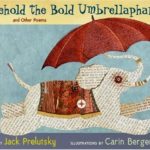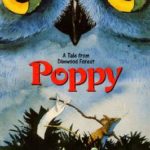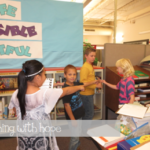
We are always asking students to summarize what they read.
Summarizing takes practice- & a lot of it.
It also involves consciously using other reading skills like identifying the main idea,
inferring, determining importance and identifying story elements.
There’s so much going on in this process of summarizing that seems so simple to us as adults.
I have looked at the method of “somebody wanted, but, so, then.” I’ll just be completely transparent here: I hate it! It might work at the most basic level, but I want my kids to be able to summarize anything and everything that they ever read. What if the somebody didn’t want something? What if it’s non-fiction and there’s no problem? I really really tried to see the beauty in using this simplified process. I rifled through dozens of books trying to find several that I could use as mentor texts. It was more difficult to find the “perfect” book to fit the process than it was to change the process to fit the book.
I decided to start from scratch.
I began by practicing summarizing on my own.
I used Peter’s Chair by Ezra Jack Keats and A Chair for My Mother by Vera Williams.
I read the books and wrote out a summary for each.
In my summary I identified key parts that every summary should have.
- When we summarize we need to first identify the story elements. Before summarizing students need to know the main idea of the text, the setting, main characters, and any details that support the main idea. These details could include the problem and solution.
- After identifying each of these elements students are ready to begin their summary. A good summary begins with the title of the text and the main idea.
- Next, students should retell the main events of the story that help to support or prove the main idea. They should use transition words to help organize their summary and include the beginning, middle and end.
- After telling all important details a good summary like any formal speech or written paper should restate the main idea. Each details from the summary should support the main idea so students should end their summary by restating the main idea.
Remember, summaries aren’t simple. Yes, they are a simplified version of the text that was read, but summarizing is a very complex skill.
To help students summarize at home I sent this…
Click any of the pictures to download your resources.
We spent three weeks on summarizing. To begin I introduced the process to my students.
The previous few weeks we had worked on identifying main idea. This definitely helped.
Day 1:
After introducing the process I read Peter’s Chair. Together, we completed a summary using the step by step process. This was our first written summary. After we wrote our summary we color coded the essential parts including the main idea, transition words and concluding statement.
Day 2:
The next story we read was Cosmo Zooms.
I typed the story out. It wasn’t fancy, but it served it’s purpose. After reading the story we began by identifying the important elements, including the main idea. Using our typed copy we physically crossed out details that were interesting, but not essential to the main idea. We also re-worded parts that we felt could be shortened with fewer words. I told the kids this was all about making less work. By saying the same thing with fewer details we would also have to write less. Of course they liked this idea!
By reading through a text and physically being able to cross out what you don’t need and use the pieces you do while writing in your own words student’s were able to see what their mind was doing while summarizing.
Day 3:
This was a lot of work so we waited until the next day to put it all together. We reviewed the story and the previous day’s work. Using our whisper phones we practiced retelling the story beginning with the title and main idea. I modeled this for students before having them do it independently.
Next, I introduced students to the process of evaluating and giving thoughtful feedback. While, students were practicing on their own I listened to a few kids. To model the process of giving thoughtful feedback I chose a student who was confident, yet still had an area or two to work on. I wanted a summary that wouldn’t be perfect so students could see that everyone will have room to grow. We completed the “fishbowl” activity with all students watching as I evaluated the student’s summary and gave thoughtful feedback.
They were finally ready to partner up and practice. It was wonderful to see students working together and helping one another. As students finished up I was able to talk with them about what went well and what they still had to work on. Every student had a goal in mind. I hadn’t expected it to go as well as it did. I thought that they were going to need even more practice in this process, but they took their role very seriously and it showed.
Day 4:
The following days students worked with the same partners. Each pair was given matching books. They read their book independently, practiced their summary using the rubric as a guide. After practicing, partners summarized the books and evaluated one another.
At this point students had practiced retelling summaries aloud, but there were only a few opportunities to practice through writing. In the spirit of summarizing I will keep it short.
-We repeated the practice process with writing summaries instead of retelling them aloud.
-We did a summary together retelling aloud and then writing it out.
-Students then practiced with a partner using the rubric and evaluating their summaries collaboratively.
-Finally, student pairs read the same book and wrote a summary. Once their summaries were complete they traded and used the rubric to evaluate one another’s written summary.
-Next, they met again and gave thoughtful feedback. We repeated this partner process 2-3 times.
What this post comes down to is that my students can summarize anything.
If they can read it they can summarize it!
If you were struggling to find a way to teach this complex skill like I was I hope you have found this helpful. Let me know what you think and if you try out the process I would love to hear how it went!


















You are amazing.
Aw thanks! I hope this was helpful!!
I will be trying this out next week!
I would love to hear how it went!
This blog is informative for us.Thank you for shareing. 🙂
My College Essay
Absolutely! Thanks, for stopping by 🙂
I agree 100% with your analysis of the “Somebody, wanted, but, so” approach to teaching summarizing. It does not fit all text and omits important skills such as main idea and details as well as using sequencing words when writing. I also feel that it omits thinking and writing in complete sentences and makes a summary seem like it only needs to be one sentence. “But” and “so” are conjunctions that join ideas in a sentence. Thank you for bringing this to the forefront and providing a great resource for summarizing.